Can cardiovascular disease be cured?
Cardiovascular and cerebrovascular diseases are common and frequent diseases, often with a high rate of death and disability, so can cardiovascular and cerebrovascular diseases be cured? The key to this depends on how to understand the meaning of "cure".

As society ages and urbanization accelerates, and as unhealthy lifestyles become prevalent among residents, the prevalence of cardiovascular disease in China is continuing to rise, with the estimated number of people suffering from cardiovascular disease now at 290 million, of whom 13 million are suffering from strokes, 11 million from coronary heart disease, and 4.5 million from heart failure. At present, the death of cardiovascular disease accounts for the first place of the total causes of death of urban and rural residents, 45.01% in rural areas and 42.61% in urban areas. So how are cardiovascular diseases mainly treated at present? Can it be cured?
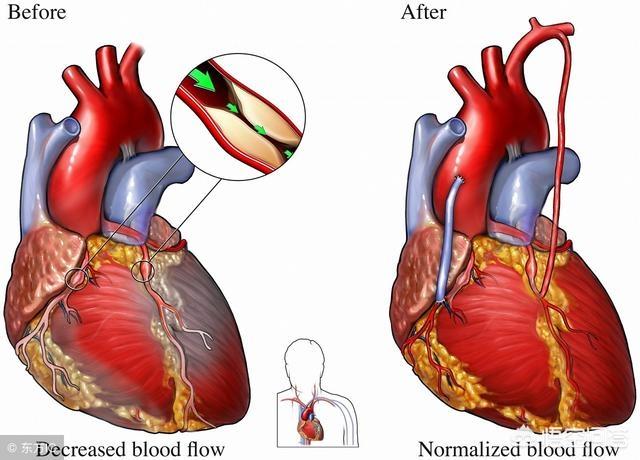
Depending on the purpose of treatment, the treatment of cardiovascular diseases is divided into treatments such as life-saving treatment during the acute onset and subsequent rehabilitation and consolidation treatments. For ischemic stroke, heart attack and other serious cardiovascular diseases, there are thrombolytic therapy, coronary stent surgical treatment, coronary artery bypass grafting and other means within the time window, so that the mortality rate has been significantly reduced, and with the help of cardiac monitoring ah, anticoagulation, antiplatelet aggregation, lipid-lowering and other medications, the direct mortality rate of cardio-cerebral vascular disease in the acute phase has been significantly improved. And the main purpose of the follow-up treatment is to improve the life treatment, improve the prognosis, delay the progress of the disease and reduce the recurrence of the disease. From the point of view of secondary prevention of cardiovascular and cerebrovascular disease mortality and recurrence, there are many standardized treatments available at present, which can be said to be able to "cure" these diseases in most cases. However, all current treatments cannot cure cardiovascular disease and require lifelong maintenance of medications and improvement of poor lifestyles. Moreover, although there are some methods and advanced means for the subsequent treatment of heart failure and the subsequent rehabilitation of stroke, the overall effect is still unsatisfactory, and perhaps in the future, with the development of genetic technology, stem cell technology, etc., it may be possible to completely cure these diseases.
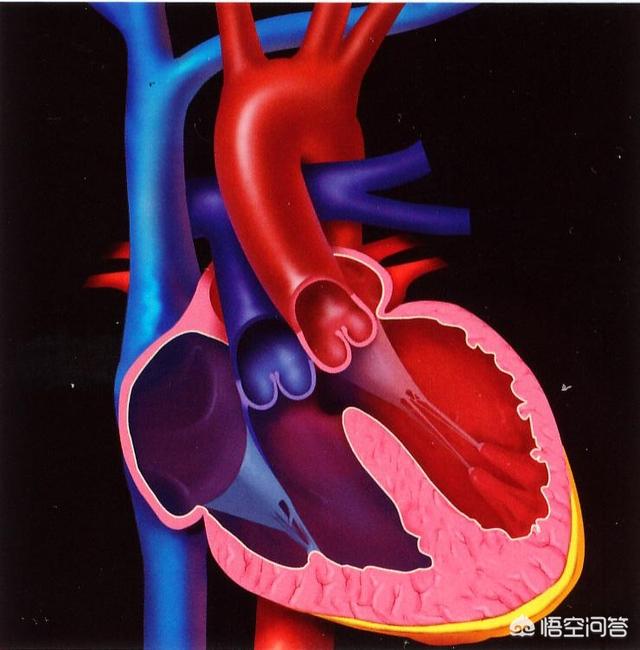 Before we get to that, let's talk about how to understand the cure of a disease, for example, after cancer treatment, the outcome of the treatment is often spoken of in terms of a 5-year survival rate, which means that the disease has been effectively treated.
Before we get to that, let's talk about how to understand the cure of a disease, for example, after cancer treatment, the outcome of the treatment is often spoken of in terms of a 5-year survival rate, which means that the disease has been effectively treated.
Cardiovascular and cerebrovascular diseases are similar in that the most effective treatment is to stop and slow down the development and acute attacks after treating and relieving the risks that may be posed in the acute phase. The most effective treatment is to stop and delay its development and acute attacks, because the treatment of cardiovascular and cerebrovascular disease does not completely remove the pathological basis for its development.
Why cardiovascular disease occurs is because of atherosclerosis and the formation of arterial plaques, which is a pathological change in the blood vessels that occurs when the endothelium of the blood vessels is damaged under the action of a variety of factors, such as diabetes mellitus, high blood pressure, cigarette smoking, and alcohol abuse, and when large amounts of lipids in the bloodstream are deposited in the vessel walls, and undergo a series of inflammatory reactions.
This reaction destroys the original normal physiological structure of the blood vessels, so that the blood vessels have undergone pathological changes, and is an irreversible change, caused by the narrowing of the blood vessels or blockage, can be improved through treatment, but can not eliminate the pathological state that has occurred, so it is difficult to eliminate the occurrence of cardiovascular and cerebral vascular disease is difficult to do.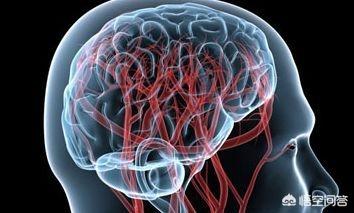 However, with the existing medical technology, as long as the standardized and reasonable treatment, can stop or delay the vascular state of this pathology continue to flare up, so as to play the purpose of preventing the onset of cardiovascular and cerebrovascular disease, which is the best treatment for cardiovascular and cerebrovascular disease.
However, with the existing medical technology, as long as the standardized and reasonable treatment, can stop or delay the vascular state of this pathology continue to flare up, so as to play the purpose of preventing the onset of cardiovascular and cerebrovascular disease, which is the best treatment for cardiovascular and cerebrovascular disease.
Therefore, for people with cardiovascular disease, adherence to treatment is a must, and indicators that can aggravate cardiovascular disease and promote its development should be strictly controlled:
- Blood glucose Fasting blood glucose less than 6.1 mmol/L, 2-hour postprandial blood glucose less than 7.8 mmol/L, glycosylated hemoglobin less than 6.5%
- Blood pressure Keep it below 130/80 mmHg and at least below 140/90 mmHg
- Lipids Total cholesterol should be controlled below 3.1 mmol/L and LDL below 1.8 mmol/L.
In addition, it should also be done to quit smoking and alcohol, eat a light diet with less salt, adhere to aerobic exercise for more than 30 minutes a day, and live a regular life without staying up late, etc., which can effectively avoid the progression of cardiovascular and cerebral vascular diseases and their attacks, i.e., it is the most effective and successful treatment.
I hope this answer can help you, welcome to click on the attention and leave a message, together to learn and exchange more health knowledge.
This is a good question, the answer is that it can be cured, but not well, it is good to get better, and in serious cases, the condition will worsen in the course of treatment, or even death.
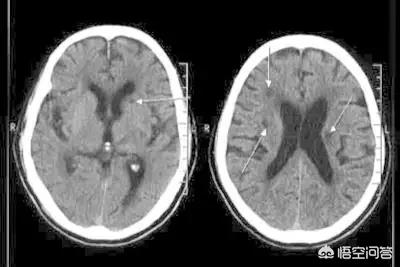
Why? Cerebrovascular disease mainly includes cerebral hemorrhage and cerebral infarction, and the clinical prognosis is closely related to the site of onset and the size of the lesion, the site of onset is important, the lesion is large, the prognosis is very poor, and vice versa, it is the same reason. The worst prognosis is large cerebral infarction and large cerebral hemorrhage, basically the prognosis is death.
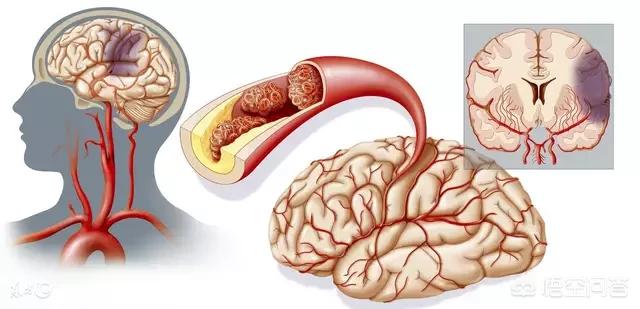
In normal times, it is necessary to pay attention to their own and their family's blood pressure, blood sugar and blood fat levels, if there is a problem, it is recommended that active treatment, usually for daily life to carry out the requirements, such as high blood pressure to eat a light diet, appropriate exercise, weight control, drug therapy, health education; high blood fat to low-fat diet, exercise therapy, drug therapy; high blood sugar, the treatment is the same, including the basic treatment and medication, and is recommended to monitor regularly, the Prevention of the four highs and prevention of complications.


Cardiovascular and cerebrovascular diseases are coronary heart disease (CHD), which is characterized by ischemia and infarction of coronary arteries due to atherosclerosis, and cerebrovascular accidents (CVA), which are characterized by cerebral infarction and cerebral hemorrhage. Treatment is divided into first aid for acute cardiovascular and cerebrovascular accidents, and pharmacologic intervention for chronic cardiovascular and cerebrovascular disease.
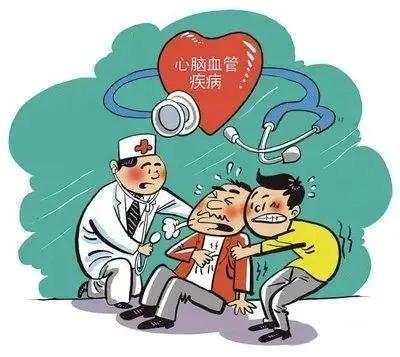
I. Coronary heart disease.
1, Acute coronary syndromes:Including unstable angina, non-ST-segment elevation myocardial infarction, ST elevation myocardial infarction, and sudden coronary death.
(1), Unstable angina:The condition is not controlled by systemic treatment such as lipid regulation, anticoagulation, antiplatelet, coronary expansion, and beta-blocker therapy. In order to prevent adverse events, coronary angiography should be performed, and if the coronary artery stenosis is more than 75%, coronary stent or coronary artery bypass graft can be placed.
(2), Non-ST-segment elevation myocardial infarction:Coronary blood flow is not completely interrupted. Myocardial necrosis caused by ischemia and hypoxia in part of the myocardium. Antithrombotic is the mainstay, and stenting or coronary artery bypass grafting can be placed according to the coronary artery stenosis shown by coronary angiography.

(3), ST-segment elevation myocardial infarction: the electrocardiogram shows ST-segment elevation, mostly through the wall myocardial infarction, is the coronary artery is completely blocked, the blood flow is completely interrupted, thus causing myocardial necrosis. Coronary stents should be placed immediately within 12 hours, the sooner the greater the benefit. If there is no intervention, thrombolysis should be used. The earlier the thrombolysis, the better, the best within 6 hours, the latest not more than 24 hours.
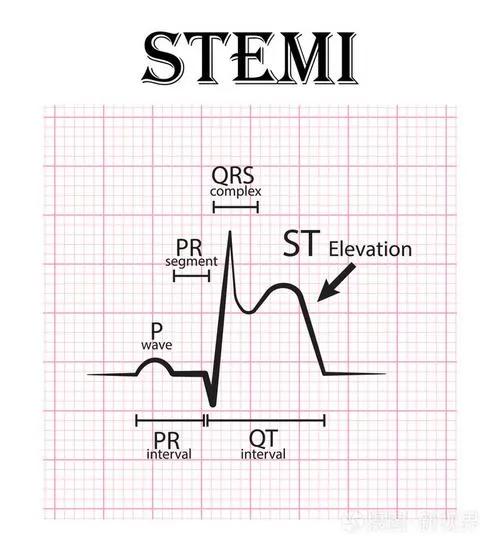
(4), Sudden coronary artery death:Immediately open the airway, defibrillation by electric shock, cardiac compression, and achieve successful cardiopulmonary resuscitation as soon as possible.
2, chronic coronary artery disease:also called chronic myocardial ischemia syndrome, including stable angina pectoris, insidious coronary artery disease, ischemic cardiomyopathy. Treatment is based on lipid regulation, antiplatelet, coronary expansion, beta-blocker therapy. Accompanied by hypertension, diabetes mellitus, to lower blood pressure and sugar.
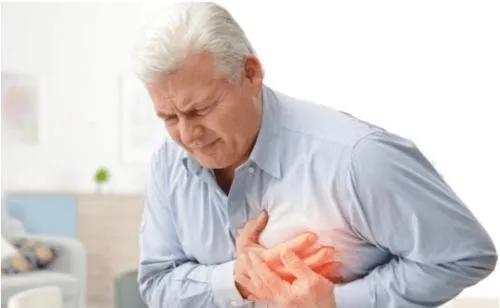
II. Cerebral infarction.
1, early cerebral infarction:Within 6 hours of the onset of cerebral infarction is the best time window for thrombolysis. Timely opening of blood vessels, improve the metabolism of brain tissue. It prevents complications and sequelae. For large artery thrombosis, vascular thrombus extraction is feasible. the best effect within 6 hours, the latest can not exceed 24 hours.
2, late cerebral infarction: patients who have lost the conditions of thrombolysis and thrombus extraction and have turned into chronic stage. Rehabilitation is the main treatment, supplemented by drugs to improve cerebral circulation and nutritional nerves. However, more attention should be paid to the treatment of diabetes mellitus, hypertension, hyperlipidemia and other basic diseases.
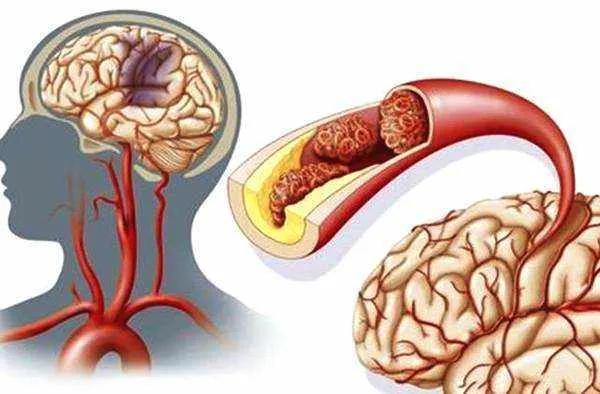
Cerebral hemorrhage.
1, Acute phase of cerebral hemorrhage: when the bleeding volume is less than 30 ml or the hematoma diameter is less than 3 cm, the patient can be treated with medication for dehydration and lowering of cranial pressure. If the hemorrhage is greater than 30 ml, surgery should be performed to remove the hematoma.
2, cerebral hemorrhage recovery stage: this stage is mainly based on rehabilitation, with acupuncture and physiotherapy. And the basic disease of drug treatment.
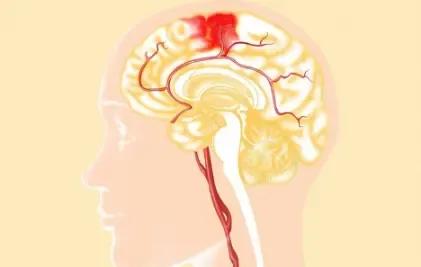
In conclusion, attention must now be paid to the underlying disease medication for cardiovascular disease, no matter what stage it is in. Lifelong pharmacologic interventions must not be slacked off.
Thanks for the invite!
Cardiovascular diseases, in a broad sense, include many diseases of the heart, blood vessels and the central nervous system, and some of them can be cured. For example, if there is a congenital heart disease, atrial septal or ventricular septal defect, it will be fine if it is blocked with a blocker, and if it is not feasible, it can be repaired surgically; if there is an arterial ductus arteriosus between the aorta and the pulmonary artery, it will be fine if it is blocked; if there is a bypass of the conduction system of the heart, the radiofrequency ablation will block it; if there are congenital malformations or hemangiomas of the cerebral arteries, it can be embolized. Such cardiovascular diseases can be cured.
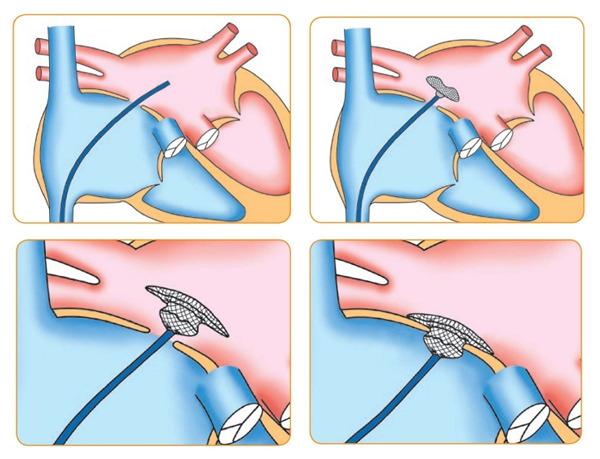
However, what people usually call cardiovascular and cerebrovascular disease refers specifically to atherosclerotic cardiovascular disease, which also includes cerebrovascular disease. This kind of disease, belongs to the chronic disease, the onset of insidious, the cause is not clear, the course of the disease is prolonged, in the current level of medical treatment can not be cured.
The exact cause of this type of atherosclerotic cardiovascular disease is not clear, only research has found some relevant risk factors, and some risk factors cannot be removed, such as genetics, gender, and changes in ageing, and only some controllable risk factors can be controlled. The cause of the disease can not be completely removed, the cure is impossible to talk about.
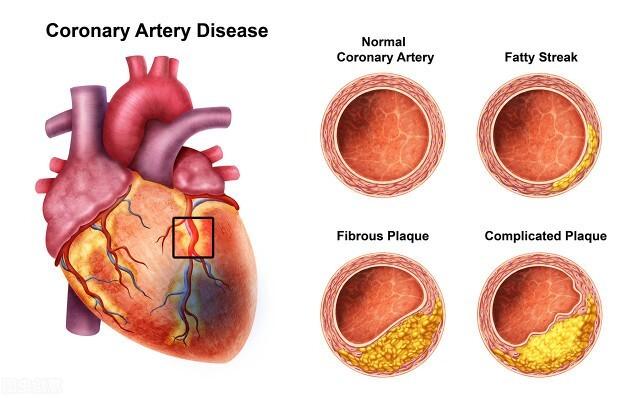
Furthermore, this kind of disease is insidious, wait until the discovery, generally is progressed to a certain degree, the cardiovascular system has occurred a certain damage, treatment recovery is very slow, very difficult. For example, atherosclerosis stenosis, to make the plaque subside is very difficult; hypertensive heart hypertrophy, to recover is not easy; myocardial infarction, cerebral infarction, necrotic tissue can only be scarred instead, it is impossible to repair as before.
Although atherosclerotic cardiovascular and cerebrovascular disease cannot be cured, medical research has found many related risk factors that can be controlled, and discovered treatments and drugs to control risk factors. For example, healthy lifestyle, salt and oil control, low-sugar and low-fat diet, quitting smoking and limiting alcohol, exercise and weight reduction, regular life and less late nights, etc.; and for example, early detection and control of the three highs, the four highs, and the five highs: high blood pressure, high blood glucose, high blood cholesterol, high uric acid, and high homocysteine, and the relevant medication treatment. It has been proved that by controlling the relevant risk factors, the occurrence of such diseases can be significantly reduced and the progression of the disease can be slowed down.
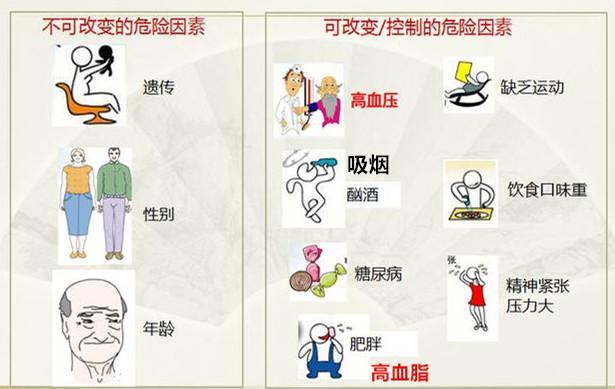
Therefore, although atherosclerotic cardiovascular disease can not be cured, but it can be effectively controlled, mitigated, and slowed down the physical damage under the prevention and treatment of modern medicine.
Cerebrovascular and cardiovascular belong to the same kind of disease, mainly caused by too much lipid, no matter that kind of disease it has a direct relationship with the oxygen content, in the treatment of cerebrovascular and cardiovascular, the doctor is often only note kind of mitigation effect, rather than how to let the patient feel the youthful era of heroic. The treatment of this disease is mainly lipolysis and lipolysis, increase the oxygen content of the blood, to achieve the effect of the root cause, rather than blindly lowering the blood pressure.
It can be cured, but not eradicated!
There is a reason for any illness, after all, many of your peers are still healthy, so why should you be seriously ill in bed.
The said cure, more is another level of concept, in the clinical known as "clinical cure", the final conclusion of the disease treatment is determined by the patient's feelings and various tests, this time the patient, the abnormal symptoms basically disappeared, the various physical indicators have been greatly improved, or even back to normal.

Treatment from etiology!
"If you don't get rid of the grass, it will grow again in the spring."
Just a household verse, it has largely explained the nature of the disease, we treat the disease is a prerequisite for a clear diagnosis, need a clear understanding of the disease, know how it came to be, in order to be able to carry out targeted treatment.
The causes of cardiovascular disease are more complex, if you want to summarize in one sentence, not very realistic, after all, many patients at the same time there may be more than one disease-causing factors, some of which account for a relatively small proportion, and some account for a larger proportion, some of which can be changed, and some of which can not be helped.
No doctor can do anything about factors that cannot be completely avoided, such as advanced age and diet, because the former is a law of nature and the latter is a major means of nutritional intake, and there is nothing we can do about it, so we can only analyze it further to find out other causative sources.
Neurological factors is one of the more typical, although a small number of patients may be due to emotional stress and other factors, so that the nervous system short-term excitement disorder, if the patient found in time to adjust, may be able to recover on their own; but in the clinical treatment, we found that the vast majority of patients with nerve disorders excitement because of the existence of a clear responsibility for the foci, which are of varying degrees, varying numbers of foci have been oppressed and stimulated the These lesions, in varying degrees and numbers, keep pressing and stimulating the sympathetic nerves, preventing them from functioning normally, which in turn causes the relevant blood vessels to spasm and contract, and the flow of blood to be greatly impeded, leading to cardiovascular and cerebrovascular diseases on the one hand, and accelerating the formation of plaque thrombosis on the other hand, which further aggravates the condition.
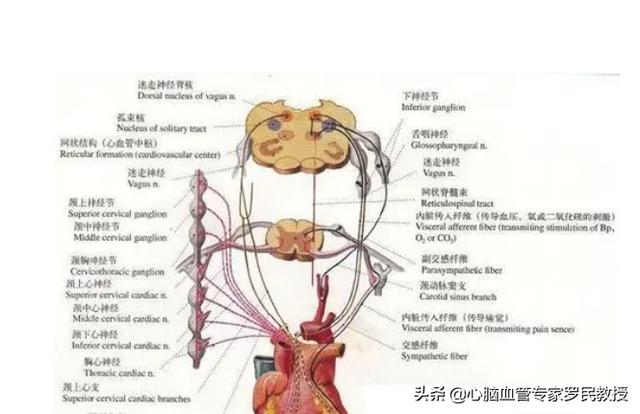
What's the treatment?
Once you find the cause, it's clearer to talk about treatment.
The first step is to target the source, what leads to the emergence of cardiovascular and cerebrovascular diseases, then "eliminate" what, all the lesions will be clearly explored, and then its therapeutic intervention, to avoid subsequent repeated stimulation of compression.
Then it is to open the blood transportation, although it is said that the nerve excitability has been lifted, but due to the long lasting compression, the nerve is still difficult to recover quickly, then it is necessary to moderate regulation, so that the corresponding blood vessels quickly dilate, and to restore the strong myocardial blood supply.
Finally, normalization, which in this case means "clinical cure" as mentioned above, is a medical term that is not the same as cure in your mind, so don't get me wrong.
PS: To achieve your ideal cure is really not very realistic, as I said in the article, there are many factors in the formation of cardiovascular and cerebrovascular disease can not be changed or avoided, the most typical is the atherosclerosis caused by advanced age, unless you are a god, can reverse time, or simply can not completely avoid the disease to come.
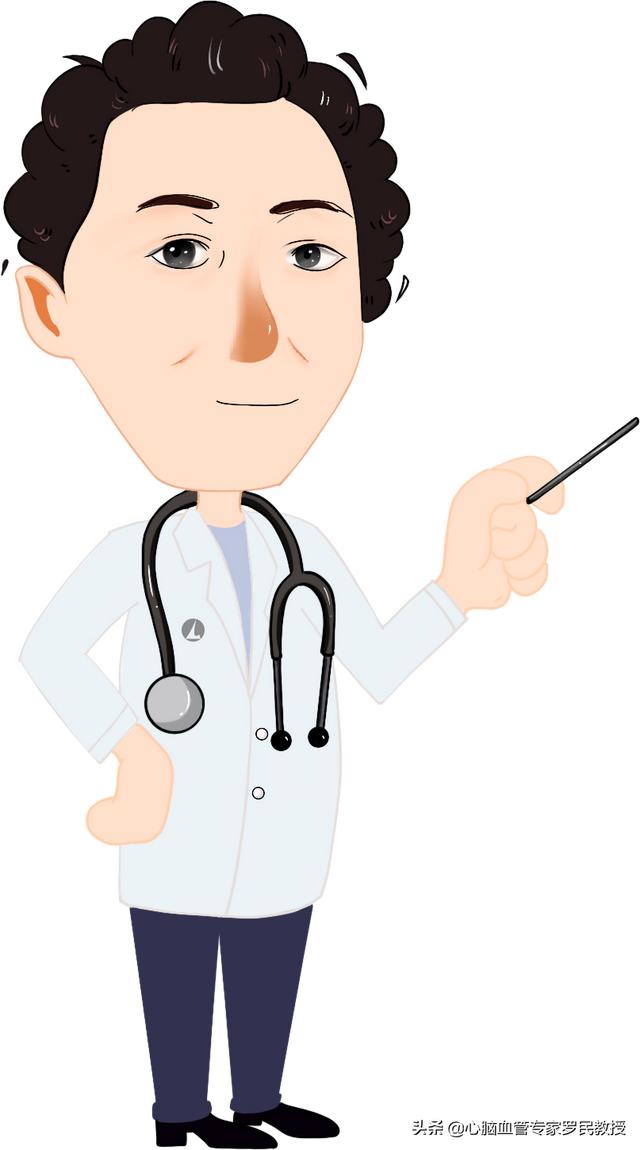
I hope my answer helps you!
If there's anything you don't understand, comment and private message me!
This depends on the specific situation. If it is detected and treated early and the right approach is found, it is possible to cure it. However, for most patients with cardiovascular disease, it would be ideal to achieve control of the disease and relief of symptoms.
Cardiovascular disease is currently the number one disease in terms of prevalence, disability and mortality, bar none. Most of the cardiovascular and cerebrovascular diseases known to the general public are caused by atherosclerosis. Atherosclerosis itself is a manifestation of aging, with age, the function of various tissues and organs degradation, arterial vascular nature is no exception. However, we should not be discouraged, after all, atherosclerosis is a slow development process, men in the age of 50 years, women in the age of 55 years (especially after menopause) and above, atherosclerosis progress began to accelerate. Some studies have found that atherosclerosis begins to appear since infancy and progresses with age until it causes severe narrowing of the arterial lumen, or even blockage, which gives rise to the so-called myocardial infarction or cerebral infarction.

lead (Pb)

youthful years

middle-aged

old age
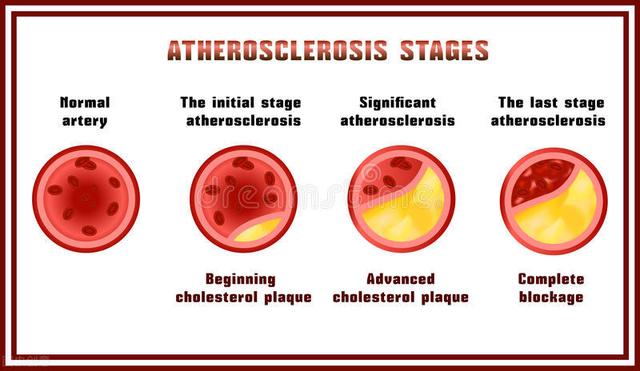
Progressive process of atherosclerosis, yellow in color as plaque (main component is cholesterol), which increases in size as it progresses and presses into the lumen
So, some people may say, isn't it possible to do stenting for atherosclerosis? First of all, we need to make it clear that not everyone can do stents, the current minimum diameter of the coronary artery is 2.25mm, for less than 2.0mm of blood vessels in principle can not use device intervention, but this year, with the introduction of drug balloon, for the lumen is relatively small but relatively large range of coronary arteries for the supply of blood, you can use the drug balloon dilatation to inhibit the progression of atherosclerosis, but the effect also varies from person to person! After all, it only inhibits, not stops. Imagine, if the current medical means can completely block atherosclerosis, not to mention the inventor must Nobel Prize in medicine, and then people live forever, the population problem will be even more serious. Since ancient times, emperors sought immortality, so far this is still only a dream.
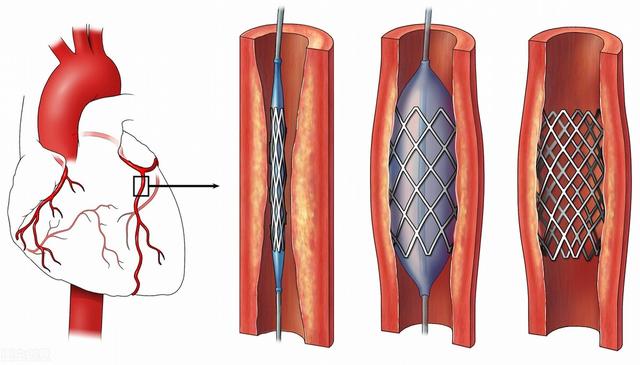
coronary stenting
In our clinical work, we have encountered many patients with severe coronary artery stenosis or even occlusion, some of them may not be able to do stenting, and they can only consider coronary artery bypass grafting, and some of them do not even have the chance to do bypass grafting, so they can only be treated with drugs conservatively, but the effect of drug conservative treatment can be imagined. When atherosclerosis further aggravates, there may be calcium deposition, resulting in calcified plaques, so the effect of drug treatment will be even worse. In addition, for atherosclerosis of the microcirculation, a condition that can currently only be treated with medication and not with devices, such lesions may have even more serious consequences. As far as diabetes is concerned, small atherosclerosis is its earliest lesion, and many patients have fundus lesions, renal function abnormalities, peripheral arterial occlusion, etc. With the development of the disease, atherosclerosis gradually accumulates to the large blood vessels, and at this time, the patient's whole body blood vessels have problems, which is very tricky to treat, and often keep on experiencing the symptoms, and then keep on being hospitalized.
Therefore, cardiovascular and cerebrovascular diseases are not easy to treat, but attention should be paid to prevention in advance, prevention is the most cost-effective, prevention in place, in order to truly improve the quality of life, and even prolong life.
This question and answer are from the site users, does not represent the position of the site, such as infringement, please contact the administrator to delete.